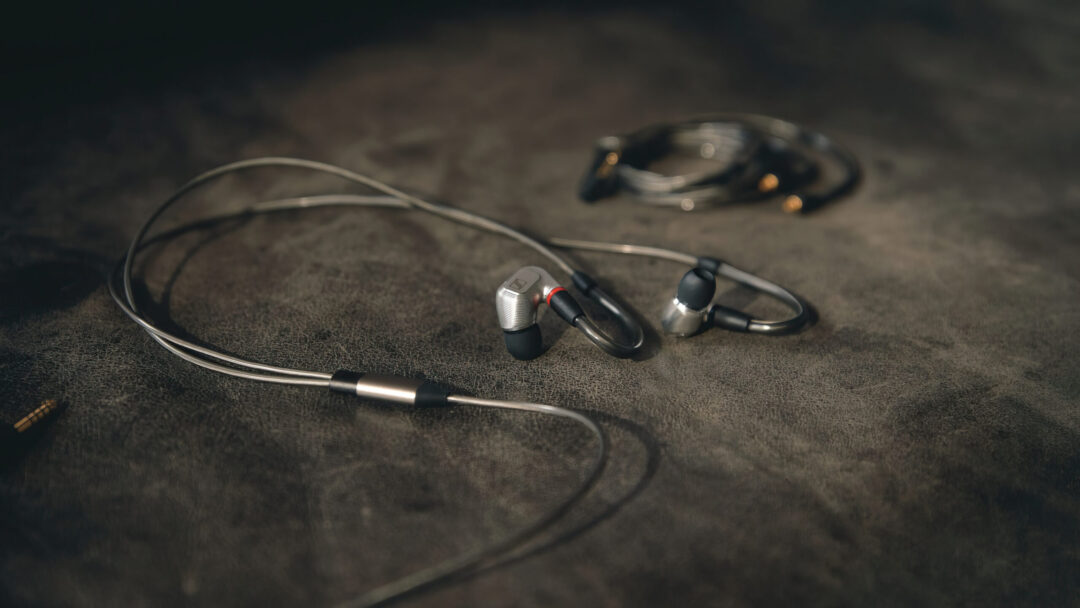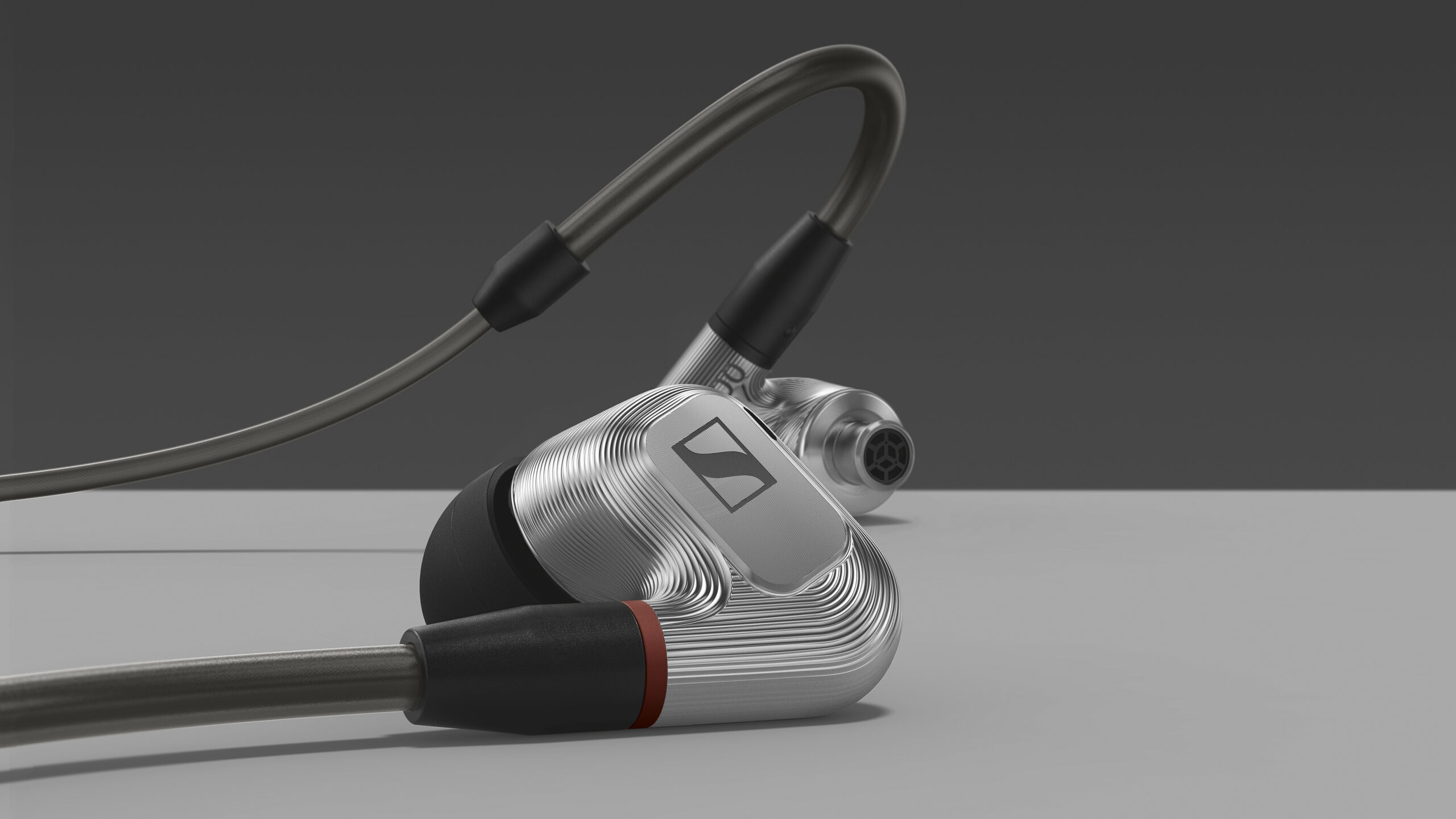When I tested Sennheiser’s previous top-of-the-range earbuds, the IE 800 S, I was impressed by the well-defined and detailed sound. To my ears, they had only one noticeable weakness: dynamics. No matter how good an amplifier I plugged them into, they made a slightly anaemic impression – even at high volume. That was a bit disappointing, for a high-end product from perhaps the world’s most reputable manufacturer of headphones and earbuds.

Improved top model
Sennheiser must have agreed that the IE 800 S didn’t quite reach the top, as the model has recently been replaced by the IE 900. It is more robustly built, with better cables and earhooks that its predecessor lacked, and also a milled aluminium housing.
Apparently they didn’t think the IE 800 S was expensive enough either, because the IE 900 costs 50 percent more.
The IE 900 is manufactured at Sennheiser’s headquarters in Germany, designed to reduce resonances and minimise acoustic problems where certain frequencies mask others. One way they do this is by using a single 7mm wideband driver for each ear.
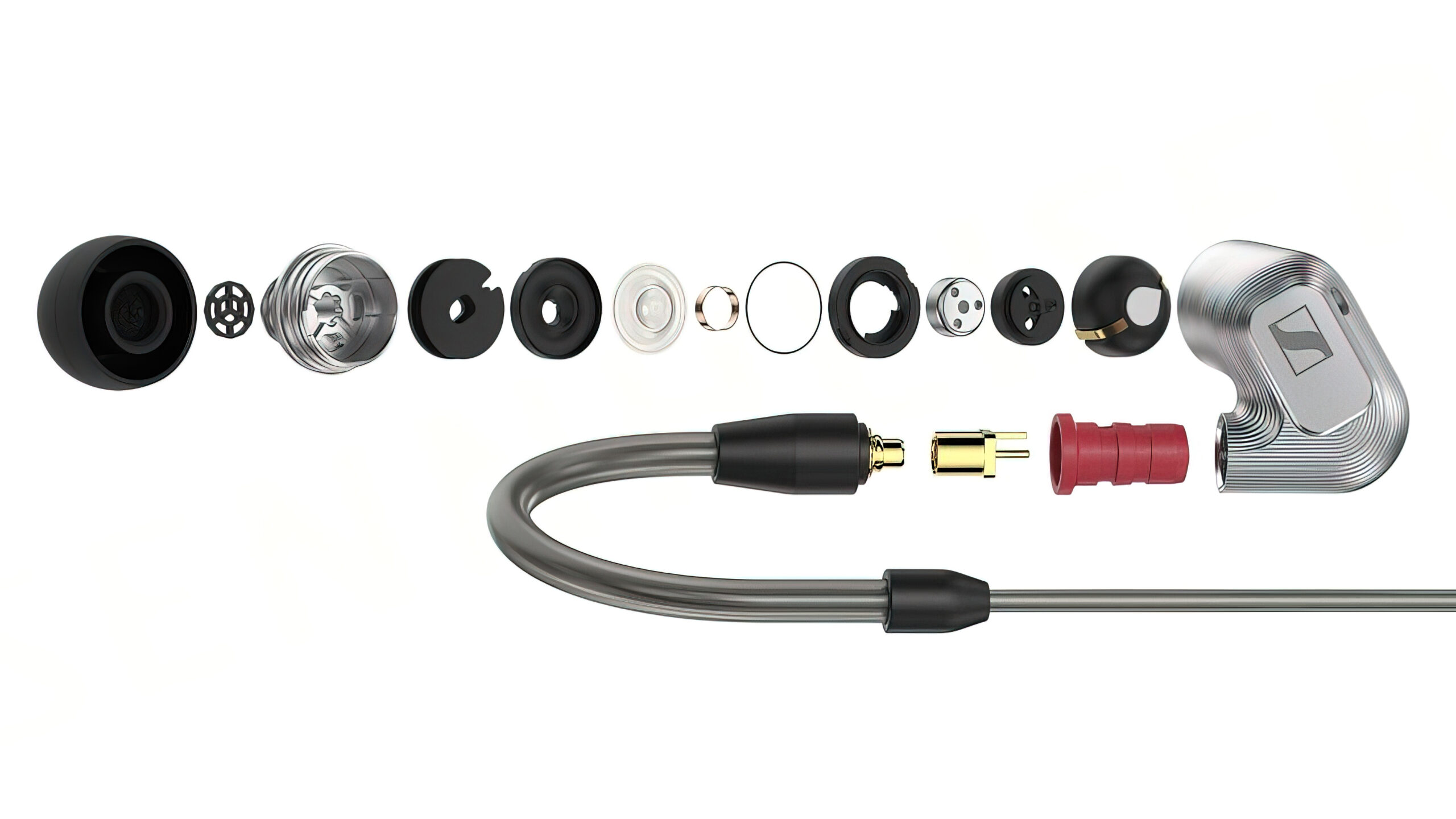
Why not more drivers?
Other high-end headphones in this price range often have two, three and four – or even more – drivers in each ear. Each reproduces its own frequency range for the best possible dynamics and lowest distortion. But that has its drawbacks. It’s almost impossible to get the sound waves to hit each other with perfect timing, and this results in a slight phase shift in the transitions between each speaker unit.
The more drivers, the more phase shifts in the audible frequency range. The result can sound unnatural, with either artificial boosts where the sound from two drivers arrive in phase. Or – perhaps worse – you can get a sound wave cancellation instead, due to opposite phasing. Peaks can be corrected with EQ, but not cancellations. They’re gone forever.
Sennheiser's latest high-end earbuds blow magic dust into your ears and tear you away from grey reality.
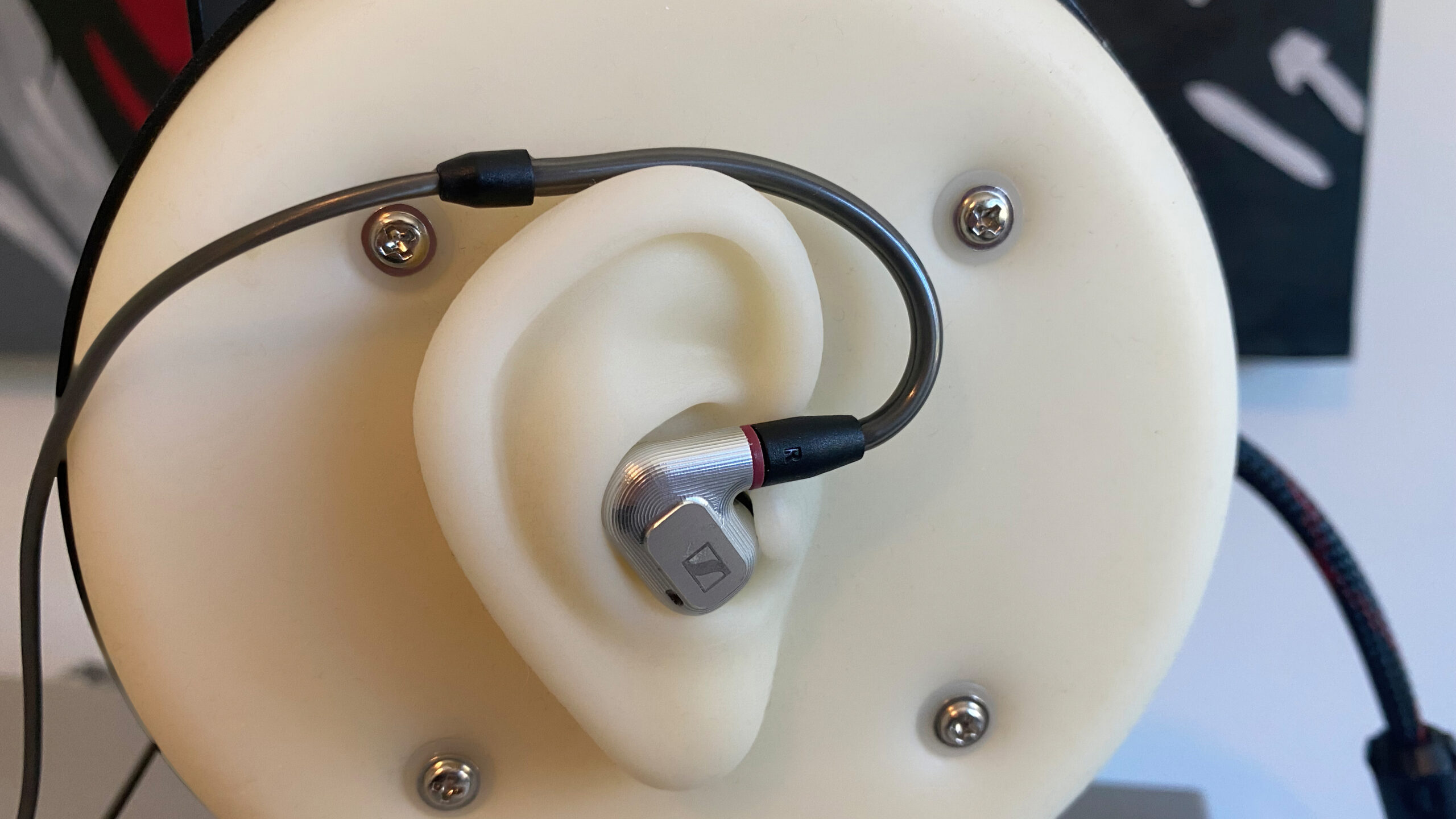
One driver packed with technology
Sennheiser’s 7 mm wideband driver uses so-called X3R technology. It involves three resonance chambers, milled into the aluminium housings of the IE 900 and placed between the diaphragm and the mouthpiece that goes into the ear. These resonate at carefully calculated frequencies, and are designed to absorb energy in key areas to prevent masking.
The human ear cannot perceive high-frequency sounds at low sound levels if louder sounds in a lower frequency range are played at the same time. By removing the energy of masking resonances, the small nuances become audible again.
Furthermore, a kind of acoustic centrifuge is used to spread and smooth the treble range. A complex shape designed to maximise acoustic friction so that excess energy is dissipated outwards and essentially disappears. Sennheiser claims that the effect is both measurable and audible, and that it should ensure as smooth and ear-friendly treble reproduction as possible.
Photo: Sennheiser
Fully automated production
Drivers have been improved since IE 800S, with lower tolerance levels between two different units, to achieve even better precision. To this end, the production of the units is fully automated in the factory.
Convenience and comfort
The IE 900 uses Fidelity Plus MMCX terminals for the wiring, allowing the use of third-party cables. Just make sure the connectors are long enough; for example, Audeze cables do not fit the IE 900. The earbuds come with an unbalanced cable with 3.5mm plug, and balanced cables with 2.5mm and 4.4mm plugs. The cables should be able to withstand several thousand bends. The earpieces can be bent by the user, and it comes with both silicone and memory foam cushions.
The sound of the Sennheiser IE 900
With the IE 800 S fresh in my memory, I was afraid that the latest flagship might suffer from the same kind of flat sound. At the same time, though, I’d be surprised if it did, now that I’ve also heard the little brothers IE 300 and IE 600, both of which have dynamic control and good entertainment value.
And I’m happy to note that the IE 900 also belongs in this class. Firstly, the earbuds are easily driven, and can easily be driven directly from your mobile phone’s headphone output if you don’t have access to an amplifier. But of course I would recommend a proper sound source, because then the earbuds really show what they can do. Both the Astell & Kern SP2000T and FiiO K9 Pro ESS work excellently, and incidentally the earbuds make a particularly grand impression if you run them from Sennheiser’s own HDV 820, connected with a balanced Pentaconn cable.
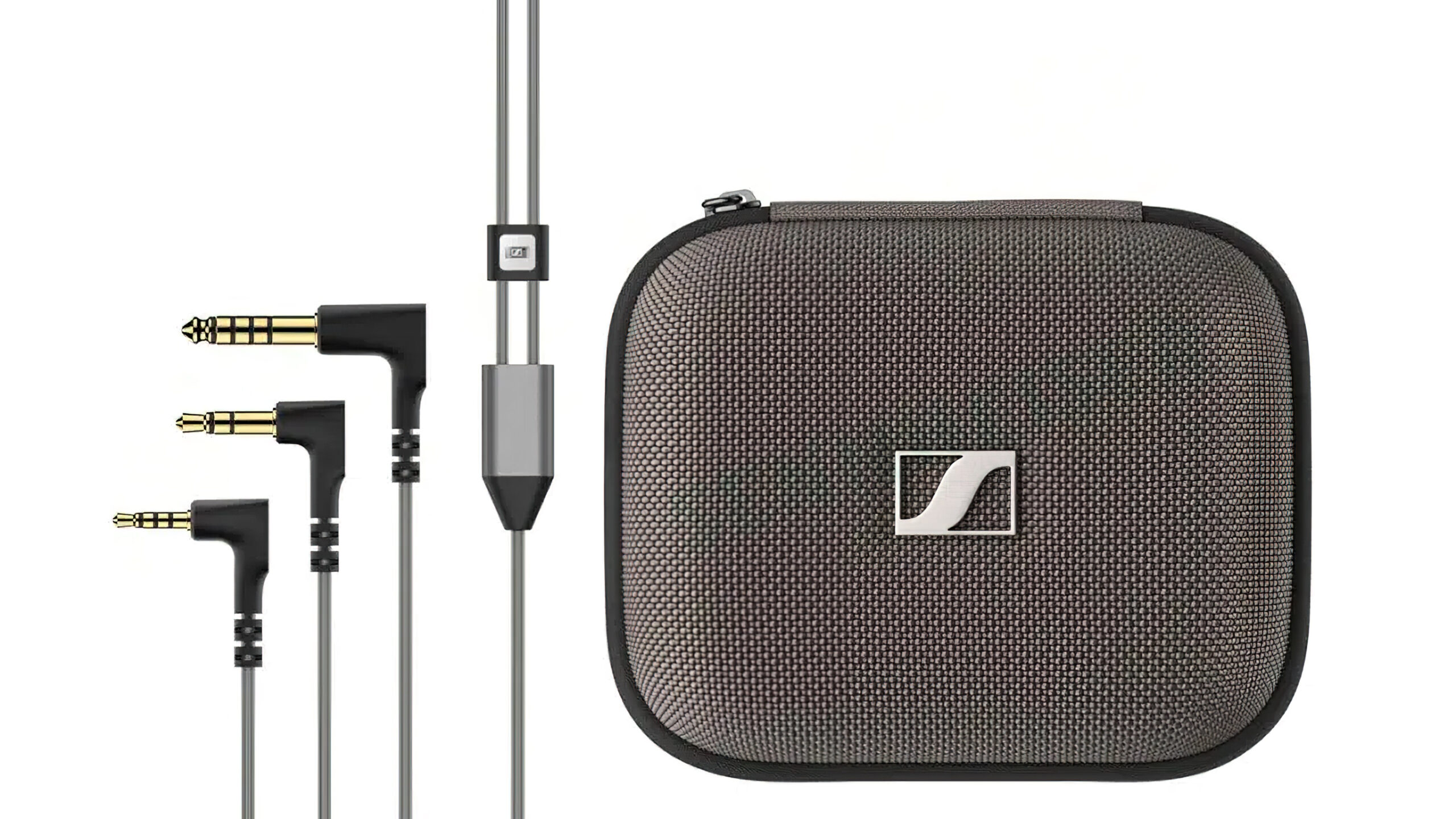
Thundering deep bass
Because the bass isn’t just deep; it’s so hard-hitting and fast-paced that most everything else pales. Super Bounce by rapper Duckwrth has a deep and powerful bass that underpins the rhythms, and it’s rarely reproduced as deeply and energetically as with the IE 900. At the same time, the vocals are exceptionally clear.
Crystal clear sound
The clear midrange brings out the guitar sounds and strings in the fine Blouse by Clairo, while her voice is airy and lovely. So is the voice of Anna of the North in the song Bird Sing, and here the sound effects of birdsong come through even more than with the Audeze Euclid.
The Sennheiser pro’s have more to offer in the entertainment department, where you can sit back and just great-joy all the quality music that pours out of them. The drums are exactly as they should be, while there are layers upon layers of air all over the place.
The voices could be clearer
If there’s anything at all you can expose on the IE 900, it has to be that the midrange is slightly muted. Singing voices and stringed instruments recede a little in the soundscape. If the Sennheiser had raised this range just a little, we would have had another layer of clarity in the midrange, and the treble range would probably have blended even better with the rest of the soundstage too.
Small sibilants
The IE 900 also has some sibilants to offer, which come from the slightly aggressive amplification from 6 kHz and up. Fortunately, the treble is so undistorted that the auditory plugs don’t feel either shrill or sharp, but a little overly energetic in the treble I guess you could call them. If the IE 900 had a slender bass, this could quickly become a problem, but fortunately the IE 900 has the foundation at the bottom, which contrasts nicely with the treble. Without the midrange seeming in any way forgotten.
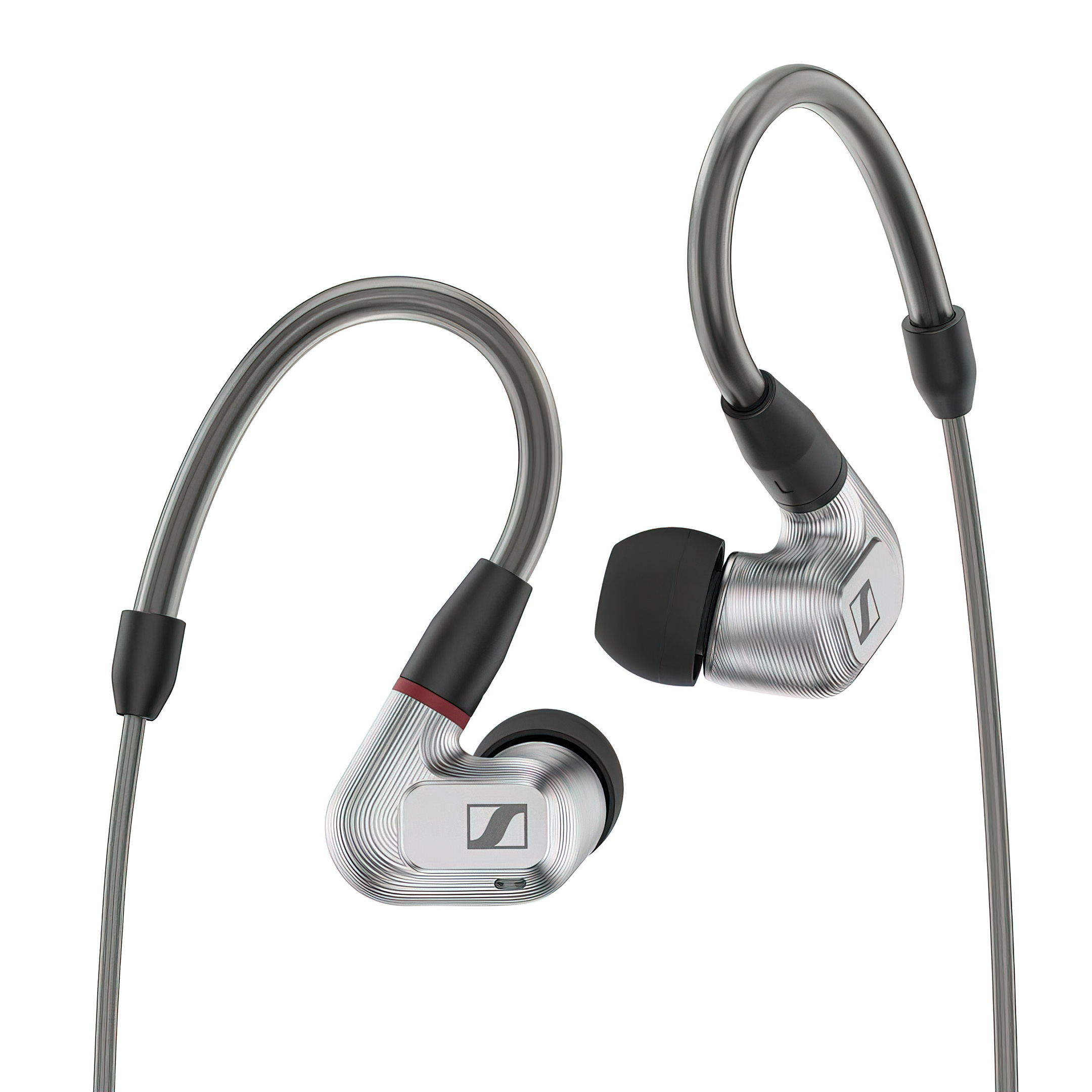
Conclusion
The Sennheiser IE 900 is a fabulous piece of work. They ooze quality from the moment you take them out of the box, and it’s super useful that three cables are included, making the plugs very useful in relation to various music players and amplifiers.
The sound is crystal clear, and whatever you’re playing, the music comes across at its best. Pianos, violins, voices, hard-hitting drums, you name it. The rock-solid bass goes really deep and punches through, while the midrange and treble detail is top-notch.
A few sibilants in the midrange now and then, as well as a mildly restrained midrange, are the only complaints one can point to. All in all, the Sennheiser IE 900 is an excellent set of earbuds.

We think
A rush of detail, combined with fabulous dynamics. And what a bass! Some sibilance due to a boosted treble.
1299 €
Specifications
- Principle: Dynamic
- Driver size: 7 mm
- Frequency range: 5 Hz – 48 kHz (tolerance not stated)
- Impedance: 18 ohms
- Sensitivity: 123 dB (1 kHz / 1V RMS)
- Microphone / Remote Control: No / No
- Cable: 3.5 mm unbalanced, 2.5 mm balanced, 4.4 mm balanced – interchangeable
- Weight: 2 x 4 g (without cable)
- Web: sennheiser-hearing.com
